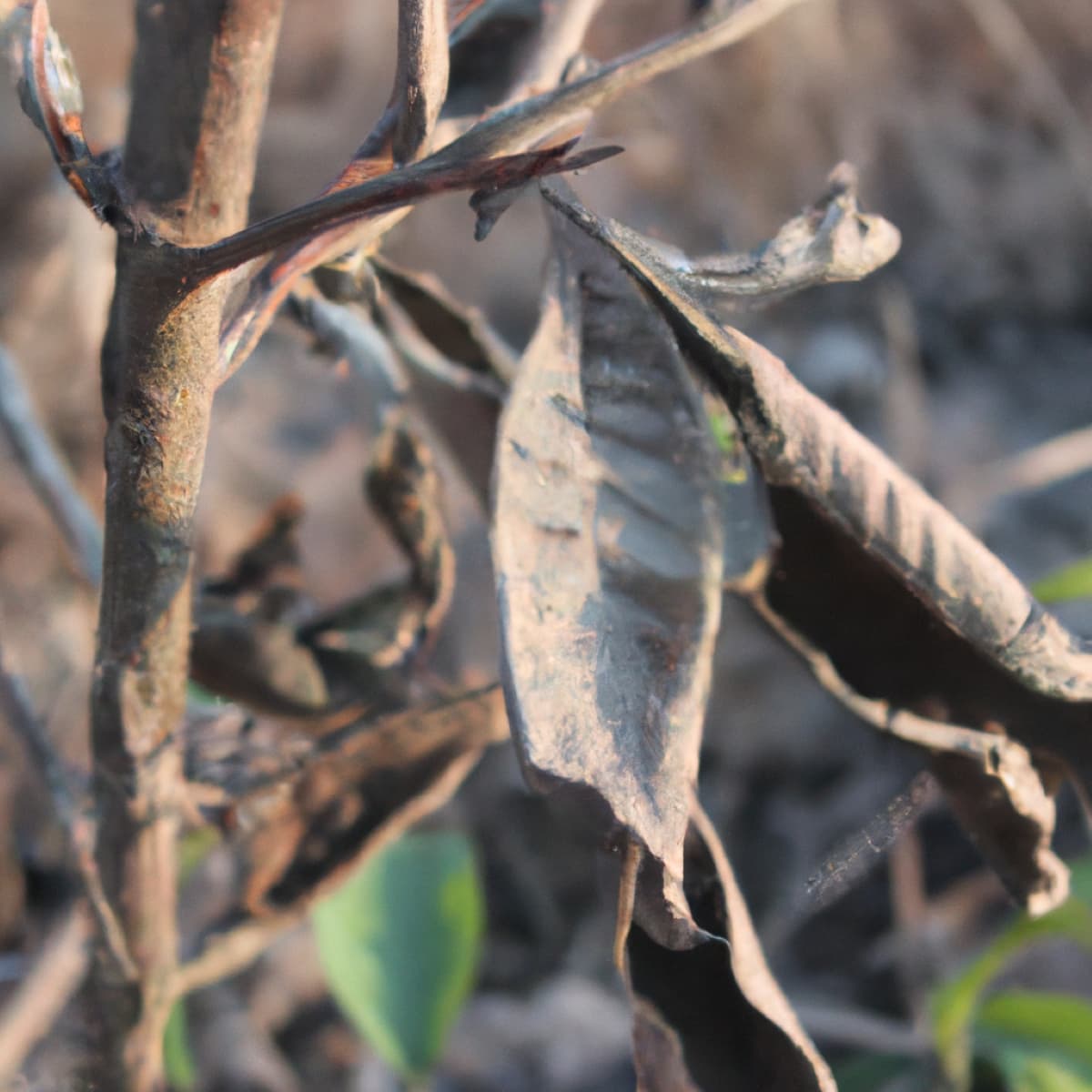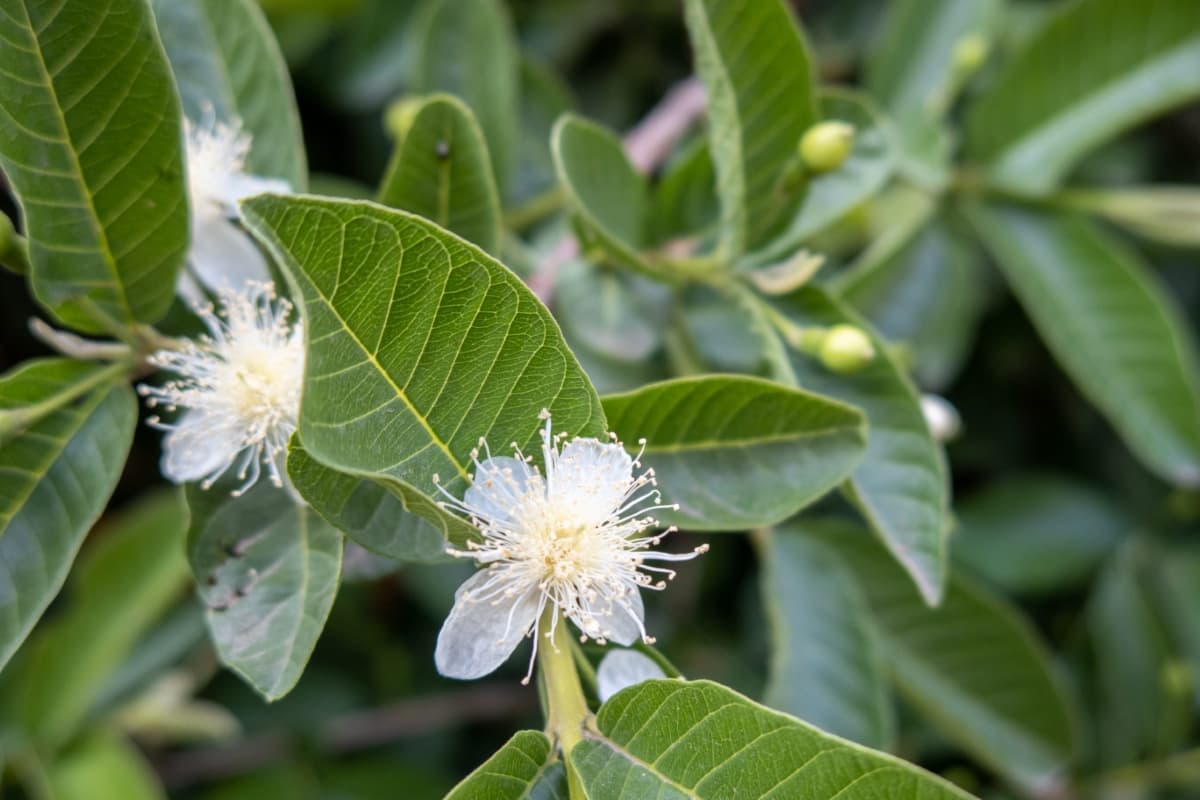Guava trees are popular fruit-bearing trees that can be found in many warm climates across the world. Guava trees are, unfortunately, susceptible to several factors that can cause them to die if they are not maintained correctly. There are several common causes and solutions to dying guava trees in this article.

9 Causes of Dying Guava Tree
Why Is My Guava Tree Dying in Summer Heat, and How Can I Save It?
The most common issue with guava trees in the summer is not getting enough water. The tree can become dehydrated and stressed without regular watering, leading to leaf yellowing, wilting, and death. It is important to water your guava tree regularly and deeply. Water the tree once a week. Water the guava tree until the soil is moist and the leaves look healthy and vibrant but not soggy.
Ensuring that your guava tree has the right amount of sunlight is important. Guava trees require a minimum of six hours of direct sunlight daily, but too much direct sunlight can cause the leaves to burn. If your tree is in a particularly hot and sunny area, you may need to provide some shade or mulch around the tree. And also, keep the soil around your guava tree healthy. The soil should be organic-rich by adding compost or manure and well-draining.
Preventing Guava Tree Death From Fungal Infections: Effective Remedies and Prevention Tips
Guava trees are highly susceptible to fungal infections that can cause death in the tree. Fortunately, several effective remedies and prevention tips are available to help prevent guava tree death from fungal infections.
- Prune the tree regularly to ensure proper air circulation. This will also help to remove dead or dying branches and reduce the overcrowding of foliage.
- Avoid over-watering the tree. Guava trees do not require a lot of water, and overwatering can lead to fungal growth. When watering, avoid splashing on the leaves and water deeply and slowly.
- Inspect the tree regularly to check for signs of fungal infection. If any are spotted, fungicides can help prevent guava tree death from fungal infections.
Identifying Nutrient Deficiencies in Guava Trees and Remedies to Revive Them
Nitrogen, phosphorus, and potassium are guava trees’ most common nutrient deficiencies. Signs of nitrogen deficiency include yellowing of the leaves and reduced leaf growth. Phosphorus deficiency can cause reddening of the leaves, while potassium deficiency will cause yellowing between leaf veins.
- Nitrogen deficiencies can be remedied by applying nitrogen fertilizer, such as ammonium nitrate or nitrate of soda.
- Phosphorus deficiencies can be remedied by applying superphosphate or rock phosphate.
- Potassium deficiencies can be remedied by applying potash or potassium sulfate.
How to Protect Guava Trees from Pests and Diseases to Prevent Decline and Death
Pests and diseases can cause the decline and death of the tree. To keep your guava trees healthy and thriving, take preventive measures to protect them from these threats. Here are a few tips on protecting guava trees from pests and diseases to prevent decline and death.
- Before planting a guava tree, buy one that is healthy and without any signs of pests or diseases.
- Keep the area around your guava tree clean, and prevent debris from accumulating.
- Be looking for wilting leaves, leaf spots, bark splitting, or unusual discoloration. If you spot any symptoms, prune away the infected parts and spray the tree with an appropriate pesticide.
Overwatering Issues in Guava Trees: Signs, Symptoms, and Steps to Rescue a Dying Tree
Overwatering can cause several issues in guava trees, including stunted growth, nutrient deficiencies, and root rot. It can also lead to a guava tree’s death if not addressed quickly. In some cases, the leaves may turn brown or black. These symptoms indicate that your guava tree is not getting enough oxygen and nutrients due to excessive water.
In case you missed it: 9 Causes of Dying Avocado Tree and How to Fix It?

To rescue it, first, reduce or stop watering the tree entirely. This makes the roots dry out and absorb oxygen. If the tree appears severely affected, you may need to remove some of the soil to allow more air to the roots. Once the roots are dry, you can add water to the soil gradually, but water deeply and thoroughly.
Underwatering Issues in Guava Trees: Signs, Symptoms, and Steps to Rescue a Dying Tree
Underwatering can cause serious issues in guava trees. Symptoms of underwatering include wilting, yellowing, and dropping of leaves. In severe cases, the tree may also fail to produce new growth. Increasing the amount of water, it receives is important to revive a guava tree suffering from underwatering. Ensuring the soil around the tree is consistently moist and providing additional water during dry spells. If possible, install drip irrigation to give the tree a steady water supply. Additionally, mulching around the tree’s base will help conserve moisture.
Guava Tree Winter Damage/dying: Protecting Trees from Frost and Cold Temperatures
When protecting guava trees from frost and cold temperatures during winter, one can take a few steps to ensure the tree’s health and longevity. These steps include the following:
- Plant the tree in a sheltered spot from the wind. This will help reduce the amount of cold air that reaches the tree, as cold air is often more damaging than frost.
- Mulch around the base. This will protect the tree from temperature extremes.
- Consider using a frost cloth over the tree during particularly cold nights. Frost cloths are lightweight fabric covers that can be draped over the tree to provide additional insulation.
- Water the tree regularly to prevent the soil temperature from dropping too low, which can cause damage to the tree.
Improper Pruning May Cause Guava Tree Death: Pruning Methods for Healthy Growth
Improper pruning of guava trees can lead to death, so it’s important to employ the right techniques to ensure healthy growth. Pruning removes branches, stems, and leaves from a tree to improve its shape, reduce size, and encourage more growth. Pruning guava trees aims to increase the sunlight exposure and air circulation that reach the inner branches and stimulate more healthy new growth. When pruning a guava tree, do not remove more than 1/3 of its total branches.
To properly prune a guava tree, remove any dead or diseased branches and branches that have grown too close together. These should be removed from the bottom of the tree and working your way up. In addition to general pruning, guava trees benefit from a process called “heading back” or “tip pruning.” This is done by cutting back the tips of the branches to encourage new buds and growth to form. Tip pruning should only be done in the spring and summer when the guava plant is actively growing.
Reviving a Stressed Guava Tree: Rehabilitation Methods for Overall Recovery
Guava trees are known for their hardy nature, but occasionally they may be subject to stress. Environmental factors such as drought, root disturbance, or nutritional deficiencies can all contribute to a stressed guava tree. Fortunately, there are methods of rehabilitation that can help the tree regain health and vitality.
- If the tree is experiencing drought stress, water it deeply and regularly until it recovers.
- If the tree is showing signs of root disturbance, consider repotting it.
- If the tree is suffering from nutrient deficiencies, use a balanced fertilizer.
- Select the appropriate pruning methods to ensure the tree’s health and vigor.
- Provide the tree with a good environment. Select a spot that receives at least 8 hours of direct sunlight and offers protection from strong winds.
In case you missed it: 9 Causes of Dying Plants on Terrace and How to Fix Them?

Conclusion
Many factors can cause a guava tree to die prematurely. These include insufficient water, lack of nutrients, pests, and disease. To fix these issues, it’s important to water the tree regularly, add fertilizer to the soil, inspect the tree for pests, and identify and treat any diseases. You can keep your guava tree healthy and produce fruit for years with proper care.
- Feed Your Flock for Less: Top 10 Tips to Save on Chicken Feed
- Ultimate Guide to Ossabaw Island Hog: Breeding, Raising, Diet, and Care
- Hatching Answers: The Top 10 Reasons Your Chickens Aren’t Laying Eggs
- Eggs and Economics: Breaking Down the Cost of Raising Backyard Chickens
- Defend Your Greens: Proven Methods to Keep Iguanas Out of Your Garden
- Ultimate Guide to Cinnamon Queen Chicken: A Comprehensive Guide for Beginners
- Ultimate Guide to California Tan Chicken: Breeding, Raising, Diet, Egg-Production and Care
- Ultimate Guide to Marsh Daisy Chicken: Breeding, Raising, Diet, and Care
- 10 Types of Chicken Farming Businesses You Can Start for Profits